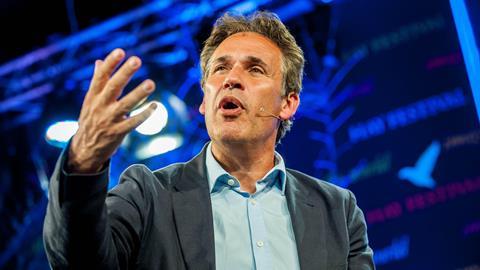Professor Richard Susskind likes to quote Canadian science fiction author William Gibson: 'The future has already arrived. It’s just not evenly distributed yet.' For 25 years now the legal world’s house technology guru has been attempting to distribute the future in the direction of the judicial system through his role as IT adviser to successive chief justices. Yesterday’s announcement that Susskind is stepping down from the role is sure to prompt the usual jokes: 'I expect Lady Carr realised she could get better advice from ChatGPT’, one wag observed in the pub last night.
Actually, by the standards of techno futurology - a field where under-prediction is more common than personal jetpack-type flights of fancy - Susskind’s record is pretty good. (Certainly better than mine: I have predicted in print that touch-screens would never catch on and that orthopaedic surgery would routinely be carried out by robots by 2010.)
Let’s look at where we were in 1998, when Susskind was appointed by the great Lord Bingham. It was a year when the Gazette trumpeted the news that nearly 300 solicitors’ firms now had websites. The Gazette was on-trend, announcing the launch of its own website under the headline ‘Everybody’s surfing now’. That was a bit of an over-statement: a survey showed that only 39% of solicitors had access to the internet, either at work or at home. The Law Society tried to fill the gap by offering internet access in the Chancery Lane reading room, at a charge of £4 for 30 minutes.
Readers of the Gazette’s ‘Infotech’ page learned of the advantages of installing an extra 32 megabytes of RAM in their desktop computer. Meanwhile the Lord Chancellor’s Department was negotiating a private finance initiative contract for the Libra magistrates’ court system. The year’s biggest technology story, however, was the impending ‘millennium bug’ caused by the inability of two-digit system clocks to handle the year 2000.
This was the state of affairs when, shortly after his appointment, the Gazette reported Susskind as predicting that in 15 years the internet would become 'the natural first port of call for information or guidance on all matters'. A bold prediction for the time, but it happened well within his timescale. Meanwhile Susskind predicted three roles for IT in 'tomorrow’s justice system': as a secure, confidential and reliable infrastructure; an online resource for lawyers, and ‘access to the courts’ - for example by video conferencing and the electronic lodging of documents. Again, only a real curmudgeon would dispute that these have, in general, been achieved.
A decade on, in The End of Lawyers? - the book for which he probably receives the most ribbing, though he has always stressed the question mark - he identified a bundle of technologies that would fundamentally challenge legal services. They included automated document assembly, 'relentless connectivity', the electronic legal marketplace and embedded legal knowledge. Again, not bad - at least for parts of the sector.
Embedded legal knowledge was a particularly prescient concept. It would involve the law being 'injected into our machines, systems, processes and working practices in such a way that it is no longer a passive resource but instead it is brought to life and integrated with our lives’. Do not scoff. A decade and a half on, this is on the cusp of reality in ‘smart contracts’ enabled by breakthroughs in cryptography - notably the blockchain - that were only just emerging in 2008.
Oddly, in retrospect, the even bigger disruptor, artificial intelligence, plays only a bit part in The End of Lawyers?, mainly as a passing reference to the work of MIT professor Marvin Minsky. But of course Susskind was well aware of the shortcomings of the previously vogueish technology, the expert system, which was covered by his first book (and PhD thesis). Today’s large language-model based systems, as he regularly admits, are a completely different kettle of fish - for better or for worse.
Speaking earlier this month at the 50th anniversary celebration of the Society for Computers & Law, which of course he chairs, Susskind described the society’s work so far as ‘preparatory’.
'We have been warming up,' he said. 'Bluntly, as tech lawyers and legal technologists, we have been on the edge of the legal community, not at its heart. Our work has not been mainstream. We have been viewed, let’s be honest, as the geeky wing of the profession.' That has at last changed. By the end of this decade, he predicted 'every lawyer will to some extent need to be a tech lawyer – it will be hard to imagine a deal or a dispute that won’t have some technological dimension. And every lawyer will need to be a legal technologist – technology is now becoming an indispensable tool of the legal trade.'
We shall see if that particular prediction stands up, but it would be a bold move to bet against it. Of course if and when such a paradigm shift becomes reality, the lady or lord chief justice will no more need an ‘IT adviser’ than they need an adviser on breathing.
Michael Cross is Gazette news editor. He has covered technology for national newspapers and specialist publications for several decades





































3 Readers' comments